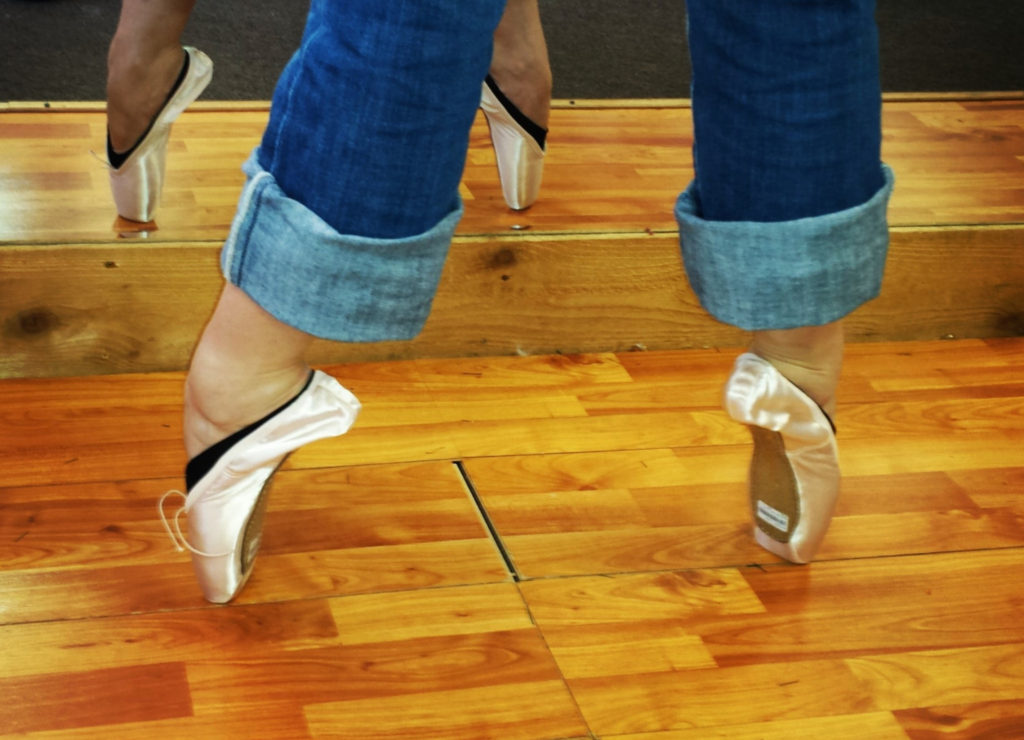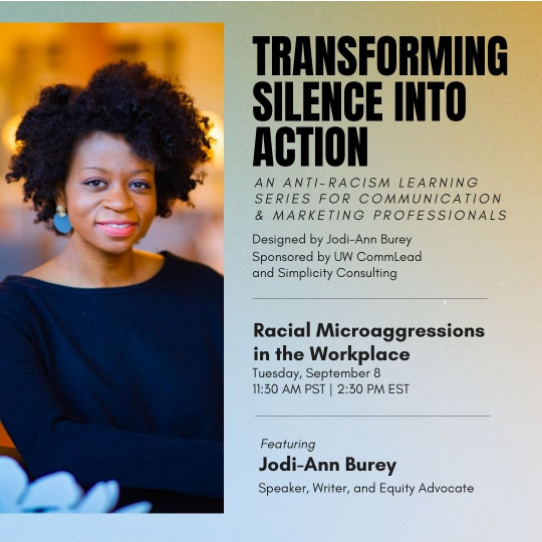
My return to ballet included a brief period with these pretty torture devices.
I grew up taking ballet lessons at a little single-studio school in a converted house on Bainbridge Island. My teacher was a woman named Nora, who, in addition to instilling me with a love of dance, I now realize was partially responsible for raising me and a core group of my dance sisters.
The pinnacle of my dance career was probably the first year I made it into Pacific Northwest Ballet School’s summer session in the Good Shepherd Center in Seattle’s Wallingford neighborhood.
I remember the audition. We wore numbers, like those worn by marathon runners, pinned to our leotards. Teachers would occasionally interrupt a student performing a combination at the barre by grabbing her leg and pushing it up to see how high it would go, or by testing a supporting ankle’s stability with a little jab. To an outsider, I imagine it resembled the evaluation of livestock by a prospective buyer.
I was strong and disciplined. I was obnoxiously flexible. I had great feet. I had the right lines. Most of all, I loved dance with every fiber of my being. I got in.
I mention the first year I was accepted to PNB School because, that year, my session ended abruptly, maybe a week in, when my kneecap dislocated itself so hard that a little chunk of it broke off. As I lay on the studio floor, clutching my leg, I cried from the pain—and because I was worried that my “window” had just slammed shut.
None other than the legendary Francia Russell, PNB Founding Artistic Director and PNB School Director, rode in the ambulance with me to the hospital. She assured me that I had nothing to worry about. I’d be admitted for another summer session.
After a long and difficult recovery from knee surgery, I did get back in. But this time was different. My thighs were thicker. My balance was off. I was distracted by my body being all wrong. My fears were confirmed when I asked if I could continue with PNB School in the fall. No, I was told. I didn’t have the shape PNB was looking for. Perhaps I should consider jazz.
My dreams of being a professional ballerina were crushed. I continued dancing through college, but I couldn’t get over the fact that I never made it. I wasn’t a “real” dancer. I revisited ballet for a few months here and there over the years before I let it go completely.
I channeled my energy elsewhere. I got an English degree. I became a reporter and evolved into a comms nerd. I got married and had a baby.
Then, in 2015, after a 12-year break, I decided I needed to get back into the studio. I signed up for a Sunday morning adult ballet class at Opus, a little dance school a few miles from where I lived in Bellingham. I bought leotards, tights and shoes, plus a couple of cute skirts to cover my generous backside. The night before class, as I struggled to recover the tiny, infuriating elastic drawstring that had snapped back inside my new ballet slipper, I almost talked myself out of it. I was too fat, too old, too stiff. Who was I kidding?
But, somehow, I did it. I got up the next morning and joined a handful of women for class, and I’m so glad I did. I felt awake and alive in a way I had forgotten I could. I got out of my head and let my body take over because it knew what to do. It remembered to push down to go up and lift up to go down. It remembered when to be sharp and when to be soft. It remembered how to catch the light on my chest and shoot energy out the top of my head, through the ends of my fingers and out the tips of my toes.
The women around me were all different shapes, sizes and levels of experience. The teacher, a beautiful dancer named Amy, was not only the leader of the class, she was also a member of the group. They accepted me without question, just because I showed up and shared that hour-and-a-half of dance with them.
I attended class faithfully for a of couple of years—and even performed onstage at the Mount Baker Theater. My legs didn’t go nearly as high, turning made me nauseatingly dizzy, and I was much thicker all over than I was at PNB. But I was happier dancing for those years than I had ever been.
Then my hips started to hurt. X-rays revealed that my pelvis was deformed (probably the reason for my obnoxious flexibility when I was a kid) and the realities of hip dysplasia set in. These days, I sometimes need a cane when I walk, and standing up for more than 15 minutes is excruciating. I wasted so much time not dancing, and now I can’t.
Dance became part of who I am and it influences how I see and understand the world. It brought me immense joy, but it also caused me deep physical and emotional pain. Because of dance, I understand achievement and failure and the difference between obedience and creativity. I know the reward of hard work, but I also know hard work is no guarantee of success. After years of hating parts of my body, I appreciate it and respect it for what it knows how to do when I shut off the technical manual in my head.
If I could go back in time, I’d sit myself down and have a word with myself about a few of these lessons. But lamenting a lack of time travel won’t do me any good, so I’m trying to apply what I learned in the studio to my career and my life. I’ve boiled it down to these:
- You have to work your ass off. Being good at anything takes hard work. No one is born excellent. I was a good dancer because I spent years training. My teachers were amazing, but the work I did was mine. When I returned to the studio after 12 years, muscle memory kicked in because I had logged years of practice. Same goes for writing, public relations, parenting and friendship. If you want to be good at something, you have to do the work.
- Luck and privilege are real. Make no mistake: The only reason I got to that audition in the first place is because my parents paid a fortune for me to attend classes. Yes, I worked my ass off, but I was also lucky enough to be born with a body that could effortlessly roll through the splits from right to center to left and feet that had banana-like arches. I was a white girl in a very white dance world. (It’s getting better, but that road is long.) My point is that even with all those advantages, I still didn’t make it to the big leagues, and I know there are a lot of kids with raw talent who will never get the chance. My hero, Misty Copeland, is the exception that proves the rule.
- Get out of your own way. After PNB School turned me down, I never fully enjoyed dancing again until I made peace with my failure to go pro. I spent so much time picking myself apart and beating myself up. I let rejection by one company school deter me from pursuing other options. Even in college, I was so self-conscious about my dancing and my body that I couldn’t learn and grow to my potential. I couldn’t enjoy dancing for dancing’s sake. Rejection sucks, but it’s part of life. Take the time you need to grieve. Then try to learn from the experience and move on. Research options that might be a better fit for what you have to offer. If you are crystal clear in your purpose, you can find comfort in doing the thing you’ve worked so hard for, whatever your craft. Lick your wounds, then get back to work.
- Don’t waste time on labels. A friend of mine called me the other day for a pep talk about her writing. In a moment of doubt, she wondered aloud if she was cut out to be a writer. Memories of my shame about not being a “real” dancer came flooding back. I pointed out to my friend that a large part of her job is writing. She literally earns a paycheck by writing. Is she a novelist? An essayist? A journalist? Nope. Is she a real writer? Absolutely. Was I a professional ballerina? Nope. Was I a real dancer? Hell yes I was, and in my heart I still am. Fretting about whether you’re real or not doesn’t help you get better, and it certainly doesn’t make the effort fun. Give yourself credit for your accomplishments and enjoy it while you can.
- The people you sweat with are your community. No one knows me like my dance friends, and I’d go to the ends of the Earth for any one of them. (I kick myself for losing touch with some of them, and I’m planning to do something about that.) I started ballet at Bainbridge Dance Center in fourth grade and danced with some of the same girls all the way through high school. (I even danced with my beautiful friend Anne in college. She went on to a successful career in modern dance.) There’s nothing like getting in the trenches with people to build trust, compassion and strong bonds. If you want to build community, find other people who are sweating over the same work as you.
- Commitment is the other side of sacrifice. I don’t mean sacrificing a limb or your first-born child. I just mean you can’t do everything. All the hours I committed to dance, I could have been playing soccer, climbing mountains, gardening, learning to sail…. Because I chose dance, I suck at all those other things. I spent time in rehearsals when other kids were at school functions. I had a messed up body image for years and still struggle with understanding my physical limits. But the flip side is I have this amazing love of dance. When I watch dance, my muscles twitch in silent recognition. Thanks to dance, I know how to commit to something, how to work hard, and how to take tough criticism.
- Be more than a technician. Being a great dancer is about more than having the right body parts or flawlessly executing certain moves. It takes heart. Even to the untrained eye, you can see when a dancer has one of those performances when the years of training and hours of rehearsal are just vehicles for the dancer’s soul. Whatever you choose to do, make sure your heart is in it. Work hard at something that’s worth your effort—that makes you feel awake and alive, and like you’re shooting beams of energy out of your head, your fingers and your toes.



Leave A Comment